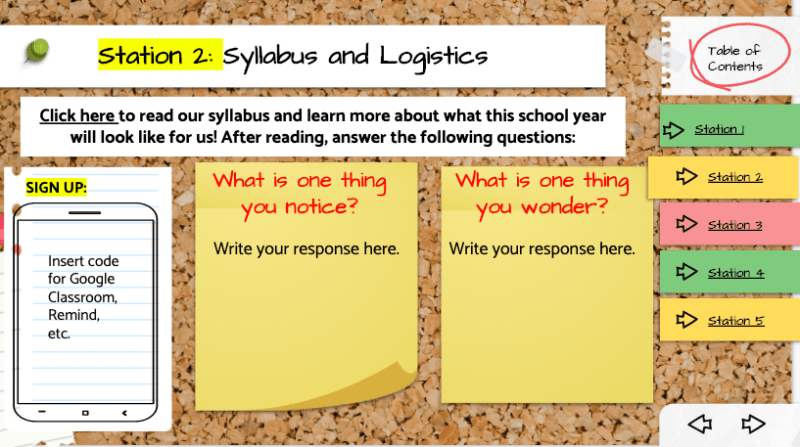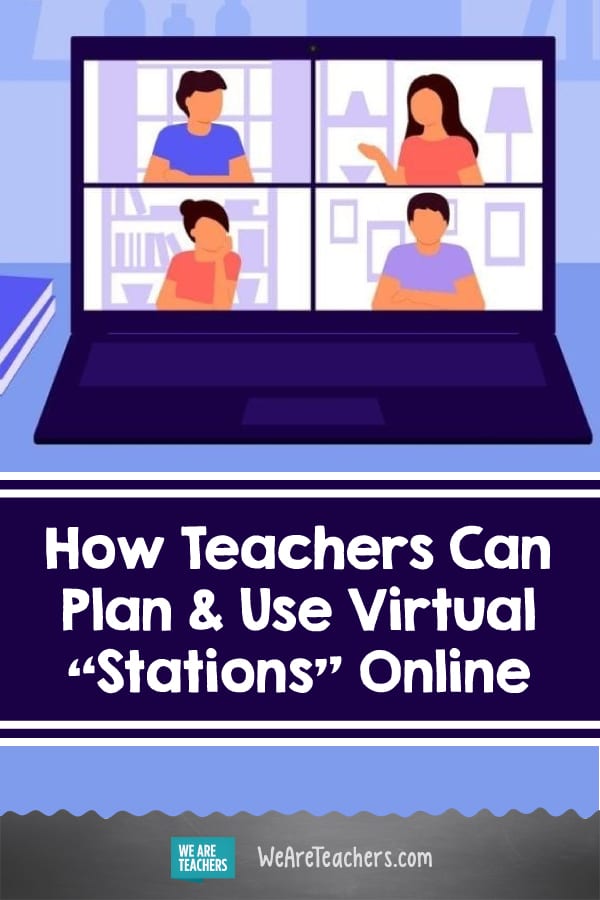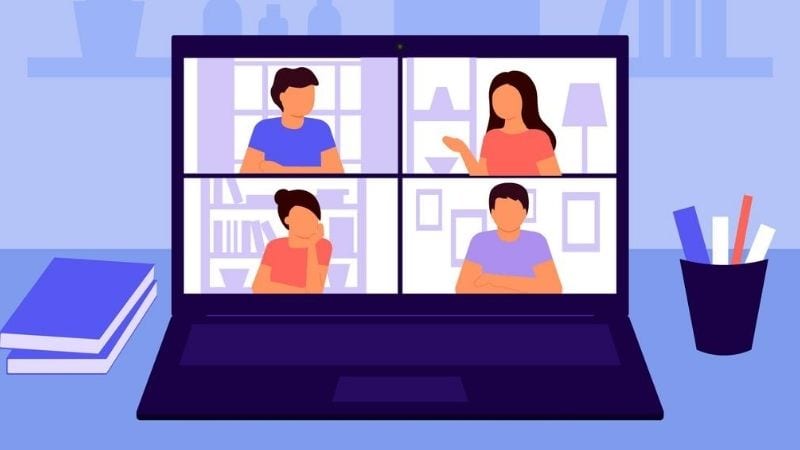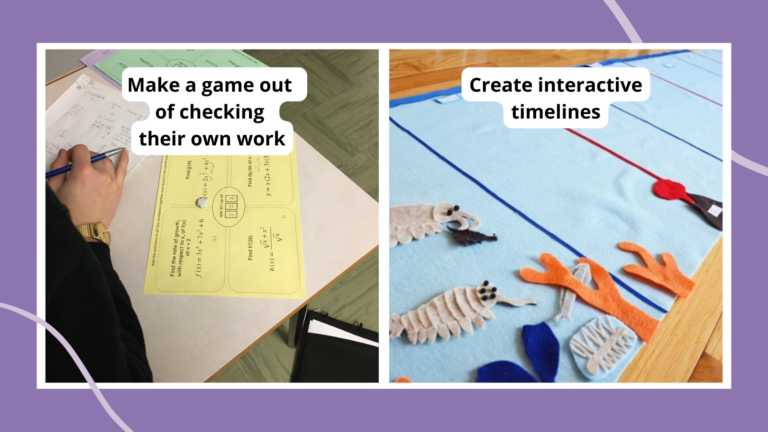So you just found out that you are teaching virtually, and you wonder: how am I going to differentiate my instruction online? First, kudos to you for wanting to meet your students where they’re at, and fill in learning gaps. Second, don’t worry. Station rotation can be done virtually. In fact, there are many options to choose from depending on what’s best for your kids. I’m drawing on my experience as a blended and personalized learning instructional coach to guide you through planning and facilitating virtual stations.
Here we go!
What are the benefits of virtual stations?
There’s a reason why so many teachers use this instructional model. First, it allows us to use data to strategically group students and differentiate their instruction. Second, teachers can teach and reteach small groups, which allows for more guidance and feedback. Finally, students practice a skill in different ways (on their own, with their peers, and with their teacher), which is engaging and supports different learning preferences. I could go on, and on. There are so many benefits.
Planning your virtual stations
Know that planning a virtual station rotation can feel like a heavy lift. There is a lot to think about and organize. Keep in mind the model’s benefits. I promise, it’s worth it. Trying this online is new for all of us, which means you will “learn while doing.” If it feels messy at first, that’s okay. Alright, pep talk is done. Let’s get into planning. First, backward plan your rotation (it’s our tried and true method, both online and off). Some questions to consider:
- What do you want your students to know?
- What do you want your students to be able to do?
- What are the tools you have for virtual learning?
- What skills do your students need to learn to use these tools independently?
- How many stations will you have?
- What type of learning will happen at each station (collaborative, individual, teacher-facilitated, etc.)?
- What learning activities are your students familiar with or enjoy?
- What routines and procedures do you need to facilitate rotations?
- How will you hold students accountable and assess student progress?
Set up your slides

Photo Credit: @magicalmsmurphy
Use a slide deck for your rotation home base. Your students should be able to access it the same way they access other resources and assignments (whether that is in Google Classroom, on your class website, via email, etc.). This is where you outline the routines and procedures, provide directions for each rotation, and include resource links. Dr. Catlin Tucker, author of Blended Learning in Action, has designed a free template for virtual rotations. This is a great place to start. Also, Angelina Murphy, a high school English teacher, shares her First Week of School Virtual Station Rotation, and a free template. Her visuals provide ideas and inspiration.

Photo credit: Catlin Tucker
As you plan, here are some ideas to consider:
- Slide 1: Include the number of stations and what happens at each
- Slides 2-5: Outline the routines and procedures for each station
- Slides 6: List student groups and the schedule
- Slides 7-9: Provide the learning activity and resources for each station
- Slides 10: Give answers to common questions and include a formative assessment or feedback mechanism
Timing and transitions
You have a lot of options here. How you time your rotation will depend on your schedule. You can use your virtual instruction time. Or you can ask students to complete the collaborative and independent work on their own, and then join you at a designated time for their teacher-led rotation.
If you use your virtual instruction time, make sure you leave plenty of time for transitions as groups move from one rotation to the next, especially if you use breakout rooms. If students only join you live for your rotation, make sure you include a formative assessment for the other rotations. This helps hold students accountable. To manage timing and transitions I like the tools Classroom Screen and Class Dojo.
Individual rotation
Students work on their own, but how will you hold them accountable? At the individual rotation, flipped learning works well. Link an instructional video in your slide. Then ask students to complete a task. You might link a Google Form that they fill out, or you can assign them a related skill in IXL. One of my favorite tools for this rotation is Ed Puzzle. You can make your instructional videos interactive. As students watch, the video will pause and students will type their answer to a question. You receive their responses and can use that data to plan your next instructional move. Adaptive software programs also work well at this rotation. Some other tools I like for individual rotations are Lexia, Epic, Listenwise, CommonLit, and Reading A-Z.
Collaborative rotation
Students work together, but how can you support students to work together when they aren’t in the same place? At this rotation, collaborative tools like Google Docs and Today’s Meet work well. Link an introductory video in your slide that explains the instructions. Then ask students to work together to complete a task. My favorite tools for collaboration rotations are Padlet, Jamboard, Flipgrid, Backchannel Chat, Voxer, and Google Hyperdocs.
Teacher-facilitated rotation
Small groups of students work with you. How can you use data to strategically group students? At the teacher-led rotation, you can differentiate your instruction, fill in learning gaps, teach, and reteach. Here you rely more on best practices like building on students’ ideas, asking clarifying questions, and using quick checks for understanding. At the end of this rotation ask students to type where they are at in the chat (1-I don’t understand this, 2-I need more practice or 3-I’ve got this).
Test it out
Before you facilitate your first virtual station rotation with your kids, test out the process with them. You aren’t in the room with them. Technology tools don’t always work. Transitions always take longer than we anticipate. Go through the slides with them. Anticipate the challenges that might come up and share strategies and solutions with your students so they can troubleshoot.
One of the most common problems with station rotation is students get stuck and stop working. Or they interrupt you during your small group instruction, which makes it impossible to get through your lesson. To prevent this virtually, provide students with specific steps they can take if they need help during the individual or collaborative rotation. The strategy “ask three before me” works well here. Students can Zoom chat or email classmates for help before coming to you.
Try it out
Because you are “learning by doing” it is ok if everything doesn’t go according to plan. Ask your students for feedback, and reflect on your experience. If you work with an instructional coach, debrief together. Don’t hesitate to make changes to improve your system. Be transparent with your kids that this is new for you and for them. Celebrate your small wins along the way, and know that by choosing to try a virtual station rotation, you are taking steps to meet your students where they are at, and that is good teaching.
Will you be trying virtual stations this year? Come and share in our WeAreTeachers HELPLINE group on Facebook.
Plus, the best virtual field trips for the classroom.


